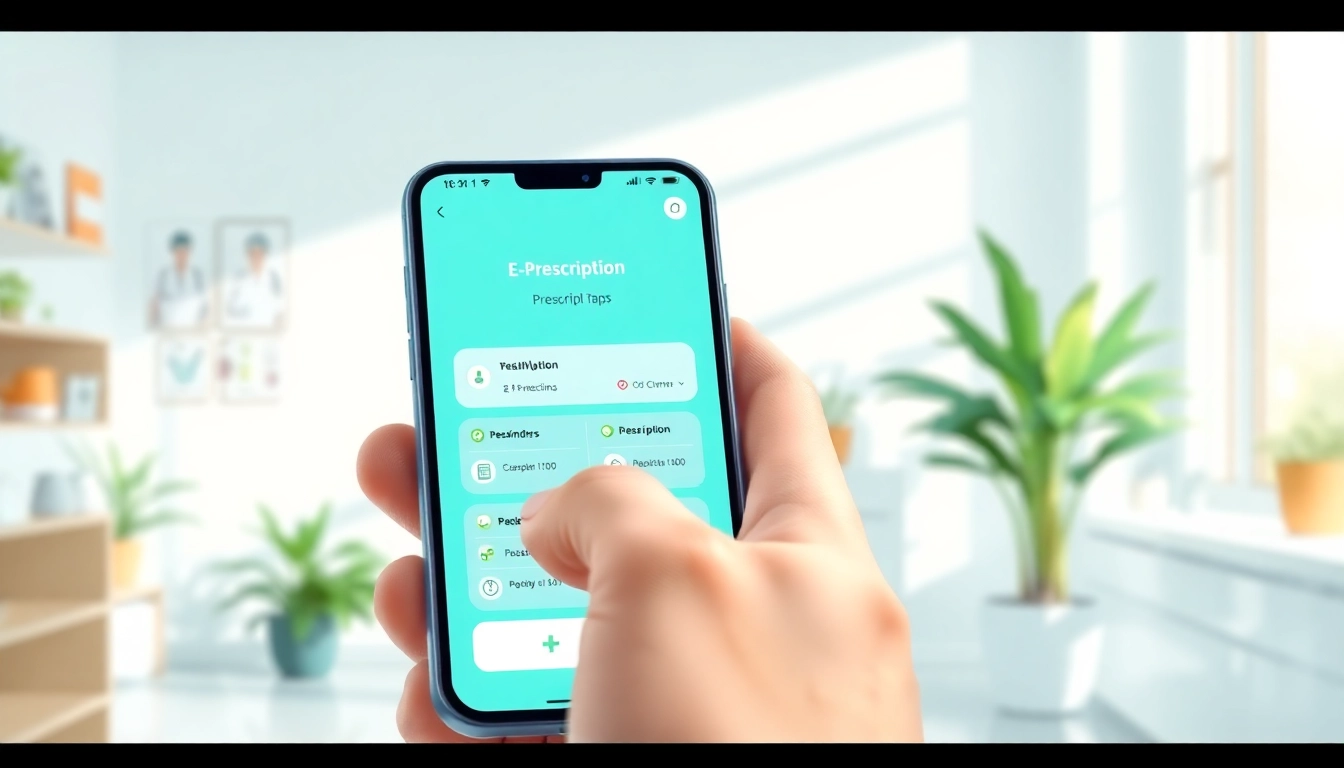Introduction to E-Prescribing
E-prescribing, or electronic prescribing, is revolutionizing the way prescriptions are managed in healthcare. By enabling healthcare providers to send prescriptions directly to pharmacies digitally, it enhances efficiency, reduces errors, and promotes patient safety. Understanding how does eprescribing work is essential for patients, healthcare professionals, and pharmacies alike in today’s technology-driven medical landscape.
What is E-Prescribing?
E-prescribing (e-Rx) is the digital process of creating, transmitting, and filling prescriptions using electronic means instead of traditional paper-based methods. This system allows healthcare providers to enter prescription information directly into a computer system, which then securely sends the prescription to the patient’s selected pharmacy. E-prescribing can include:
- Prescription creation and management
- Drug utilization reviews
- Medicaid and Medicare compliance checks
- Patient medication history evaluation
The electronic nature of this process significantly improves the accuracy and legibility of prescriptions, reducing the risk of errors associated with handwritten scripts.
Benefits of E-Prescribing
The adoption of e-prescribing offers numerous advantages that contribute to the overall improvement of healthcare delivery. Some notable benefits include:
- Improved Accuracy: The risk of errors due to illegible handwriting or incorrect dosages is significantly minimized when prescriptions are generated electronically.
- Increased Efficiency: E-prescribing streamlines the process, reducing the time it takes for a patient to receive their medication.
- Enhanced Patient Safety: Features such as drug interaction alerts help ensure patients are not prescribed conflicting medications.
- Convenience for Patients: Patients can receive medications faster, and often, they can choose to have prescriptions sent directly to their pharmacy of choice.
How E-Prescribing Improves Patient Safety
Patient safety is a paramount concern in healthcare, and e-prescribing plays a crucial role in enhancing it. By providing healthcare providers with access to a patient’s complete medication history, e-prescribing helps prevent adverse drug interactions. Additionally, built-in alerts notify prescribers of potential issues, such as allergies or contraindications. This proactive approach can lead to more personalized care, reduced hospitalizations, and better health outcomes for patients.
How Does Eprescribing Work?
The underlying mechanisms of e-prescribing encompass a detailed technological process designed to ensure accuracy and security. Understanding this process is critical for healthcare providers and patients alike.
The Process of Sending a Prescription
The e-prescribing process involves several key steps:
- Prescription Creation: A healthcare provider enters prescription information into an electronic health record (EHR) or e-prescribing system.
- Electronic Signature: The provider “signs” the prescription electronically, ensuring authenticity and compliance with regulations.
- Transmission: The prescription is securely transmitted over a health information network to the selected pharmacy.
- Pharmacy Response: The pharmacy receives the prescription, verifies its details, and prepares the medication, often checking for possible interactions or insurance coverage issues.
- Patient Notification: Patients are informed when their medications are ready for pickup, contributing to improved satisfaction and compliance.
Technological Framework Behind E-Prescribing
The technological backbone of e-prescribing includes various software systems, databases, and communication networks designed to facilitate secure and efficient prescription management. Key components include:
- Electronic Health Records (EHR): These systems store comprehensive patient information and include e-prescribing functionalities.
- Health Information Exchanges (HIE): These platforms allow secure data sharing between different healthcare providers and pharmacies, enhancing the e-prescribing process.
- Interoperability Standards: These ensure various systems can communicate effectively, providing seamless transitions of care.
This intricate web of technology ensures the entire e-prescribing process is both secure and efficient.
Common Software Solutions Used
Various e-prescribing software solutions exist in the market, designed to address the unique needs of healthcare providers and pharmacies. Prominent e-prescribing systems often integrate with wider EHR solutions to provide a comprehensive suite of features. Some popular functionalities within these systems might include:
- Real-time patient medication history access
- Drug interaction and allergy alerts
- Automated prior authorization requests for insurance
- Patient reminders and notifications
By leveraging these technologies, healthcare providers can ensure a more streamlined experience for both themselves and their patients.
Importance of E-Prescribing in Modern Healthcare
The role of e-prescribing has become increasingly important in the modern healthcare landscape, fostering improved outcomes and operational efficiencies.
Reducing Prescription Errors
One of the primary benefits of e-prescribing is its potential to significantly reduce prescription errors. Traditional prescription methods can involve numerous variables that increase the likelihood of mistakes, including illegible handwriting and miscommunication between providers and pharmacies. E-prescribing minimizes these risks by providing clear, standard formats for all prescriptions, supported by immediate access to patient medication histories and drug interaction databases.
Streamlining Pharmacy Operations
Pharmacies benefit from e-prescribing by gaining access to prescriptions that arrive electronically, which reduces the processing time for filling medications. This can lead to shorter wait times for patients and improved workflow within the pharmacy. Moreover, real-time notifications regarding prescription status and inventory levels enable pharmacies to enhance their service delivery further.
Enhancing Patient Experience
Patients increasingly demand convenience in their healthcare interactions, and e-prescribing delivers on this front. The ability to have prescriptions sent directly to the pharmacy of their choice allows for a smoother experience than having to manage paper prescriptions. Additionally, e-prescribing practices often incorporate online platforms where patients can manage refills and view their medication history, thus empowering them to take charge of their health.
Challenges and Considerations in E-Prescribing
Despite the numerous benefits, the implementation of e-prescribing is not without its challenges. Healthcare providers must navigate several hurdles to ensure successful adoption.
Security and Privacy Concerns
With the increased use of digital technologies comes significant concern regarding patient privacy. E-prescribing systems must adhere to rigorous security protocols to prevent data breaches, unauthorized access, and the compromise of sensitive patient information. Regulations such as HIPAA (Health Insurance Portability and Accountability Act) dictate how patient data must be handled, and any e-prescribing solution must ensure compliance to safeguard patient trust.
Integration with Existing Systems
Many healthcare facilities utilize existing EHR systems, and integrating new e-prescribing capabilities can prove challenging. Healthcare organizations must ensure that their current systems can communicate effectively with new software solutions and that any transition does not disrupt ongoing care. Comprehensive training and change management strategies are vital to facilitate a seamless integration process.
Patient Access and Understanding
While many patients are comfortable using technology, others may face barriers to access or understanding. Educational initiatives, particularly for vulnerable populations, are essential to maximize the benefits of e-prescribing. Clear communication strategies must be employed to help patients navigate new processes, ensuring they fully realize the advantages of electronic prescriptions.
Future Trends in E-Prescribing
Looking ahead, several trends are shaping the future of e-prescribing, with advancements in technology and evolving healthcare policies driving these changes.
Advancements in Technology and AI
The integration of artificial intelligence and machine learning into e-prescribing systems holds immense potential for enhancing accuracy and efficiency. AI can analyze vast amounts of data to identify potential drug interactions, optimize dosing recommendations, and personalize medication regimens based on individual patient profiles. Furthermore, the adoption of telemedicine platforms is expected to bolster e-prescribing capabilities as more patient consultations happen virtually.
Potential Policy Changes
Regulatory frameworks surrounding e-prescribing are continually evolving. As healthcare providers increasingly recognize the benefits of e-prescribing, policies may shift to promote its wider adoption. This could include legislative measures to mandate e-prescribing in certain contexts or incentivizing its implementation through reimbursement models. Such changes will likely aim at enhancing the quality of care and ensuring healthcare practices align with modern technological standards.
The Role of Telehealth in E-Prescribing
Telehealth has emerged as a critical component of healthcare delivery, particularly in response to global challenges. As telehealth consultations become more commonplace, the integration of e-prescribing will be essential to facilitate seamless medication management. With providers able to prescribe medications digitally during virtual visits, patient access to necessary treatments becomes more straightforward and effective.
Conclusion
As e-prescribing continues to transform the healthcare landscape, understanding how does eprescribing work is essential for all stakeholders. The benefits of increased accuracy, improved patient safety, and streamlined operations demonstrate that e-prescribing is not merely a trend but an essential evolution in healthcare. With ongoing advancements in technology and proactive policy development, the future of e-prescribing promises even greater improvements in patient care.



